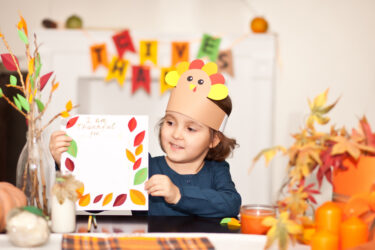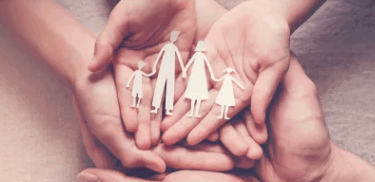It’s a given that what all teens want is a little space. But just make sure the “space” they’re creating is safe.
Have you heard about a little Web site known as MySpace.com? It’s cool, sleek and cleanly designed to make your experience there feel mature and hip. It’s a social network – phenomenally popular with 12- to 17-year-olds – chock full of everything they’re into. It’s a virtual communication hot zone that anyone can partake of. Wait a minute – anyone? Got your attention yet?
The uproar about MySpace.com has a familiar feel. On one hand, law enforcement agents have called the website a “smorgasbord for predators.” On the other, millions of teens think it’s a cool place to hang out online. So where’s the balance?
MySpace is attractive to teens because it satisfies two cravings – one for self expression and the other for recognition by peers. Setting up a personal page on MySpace is free, quick and fun. With the site’s simple tools, members can use words, colors, photos, music and animation to create self-portraits that are as unique and changeable as teenagers themselves.
But that’s only half the equation. MySpace is also a social network. Kids can invite friends to look at and comment on their pages, and those friends can easily link them to their friends who can link them to their friends through IM, invitations and bulletins and so on. MySpace makes it so easy for kids to “meet” other people that it’s given rise to the new verb “friending.” For adolescents hungry for recognition, this kind of instant feedback from others is irresistible.
From a parent’s point of view, of course, the easy connections with people unknown in real life are what nightmares are made of. There’s no question that MySpace has attracted the attention of online predators because so many kids are provocative or cavalier about posting personal information. In addition to startlingly candid accounts of teen drinking and sex, kids often post information about where they work, shop and go to school.
Worrisome as this candor may be, it isn’t the entire story of MySpace. Parents who get over their initial dismay and actually spend some time on the site will discover that at least some of what young people post is creative, high-spirited and, yes, fun. MySpace and other social networking sites like it offer young people unprecedented opportunities to communicate their ideas and feelings with others and get an almost instantaneous response.
Sometimes the response can be damaging to fragile young egos, but other times kids really do discover a community that appreciates what they have to offer. Many young musicians, for example, have found an audience for their music on MySpace.
In short, the potential rewards of MySpace are as genuine as the risks. The question is how to guide adolescents so they can enjoy the benefits of participating in this lively online community without putting themselves in peril. The first step obviously is to get online and educate yourself. Next, talk to your child about what you’ve found. Point out sites you think are interesting and those where the photos or text are inappropriate or make kids vulnerable to predators.
If your child has set up shop on MySpace, don’t be shy about visiting his page. Even though kids might try to convince you otherwise, MySpace is not a private journal. Your child’s teachers, coaches and future employers along with millions of other adults can read what’s written there. Visiting the site will also help you feel more comfortable in setting ground rules for its use. Here are some suggestions:
Observe Age Limits
In the MySpace “Frequently Asked Questions” section, it states flatly, “If you’re under 14, MySpace is not the place for you. Go away.” Younger kids regularly ignore this provision. If you find your ‘tween has a site or if you decide an older child isn’t mature enough to handle MySpace privileges, ask him to log you on. Click on “Account Settings” and “Cancel Account.” You can also remove all information from your child’s profile.
Lose the Details
The user agreement for MySpace states clearly that a MySpace profile “may not include the following items: telephone numbers, street addresses, names.” In addition, kids shouldn’t include e-mail addresses or IM screen names other than the ones they use through the site. Unless it is deliberately removed, MySpace automatically includes information about the town where a member lives, so your child should not post specific information about school teams, employers or even favorite stores that would make it easy for a predator to find him.
Ponder Privacy
Blogging entries on MySpace can be posted as a “diary” (which means only the member can read it), as an entry for friends or as an entry anyone can read. At first glance, it seems as though the “friends” setting will protect kids because it keeps their musings away from total strangers. Unfortunately, the private settings are safe only if kids are very selective about who they invite to read their entries. Since the goal on MySpace is often to have as many “friends” as possible, kids may not be as discriminating as they should be. Parents have two options – review your child’s “friend” list and ask how he knows each person, or have your child keep the site public so you can visit it now and then.
Profile Predators
Be sure your child understands how online predators think. Most will “groom” kids by complimenting them and commiserating with them about parents and teachers. Some may also offer to send kids money or gifts in exchange for photos or webcam sessions. Flattering as this attention may be, kids should go on high alert whenever someone on MySpace takes a special interest in them. Any “friend of a friend” has to be treated like a stranger.
Nix Explicit Pix
The sign up page for MySpace encourages kids to think of themselves as prospective partners by asking about marital status and other “matchmaker” characteristics. Kids, in turn, often post photos they think are “hot.” Point out to your teen that provocative pictures turn sex into a commodity and make it seem as though people are nothing more than the bodies they inhabit. Talk to your child about how he could use a photo or, better yet, artwork to convey a fuller sense of who he is.
With the right ground rules, most older teens will be able to use MySpace not only as a creative outlet but also as a workshop where they can get and give feedback on music, movies, ideas and even hairstyles. Like so many things online, MySpace isn’t inherently good or bad. As parents, we must chaperone – checking in regularly to be sure rules are being observed – but we should also convey to our teens our expectation and confidence that they can shape their corner of MySpace into a good place for them to be.
Carolyn Jabs is a former contributing editor of Family PC and mother to three computer- savvy kids.




